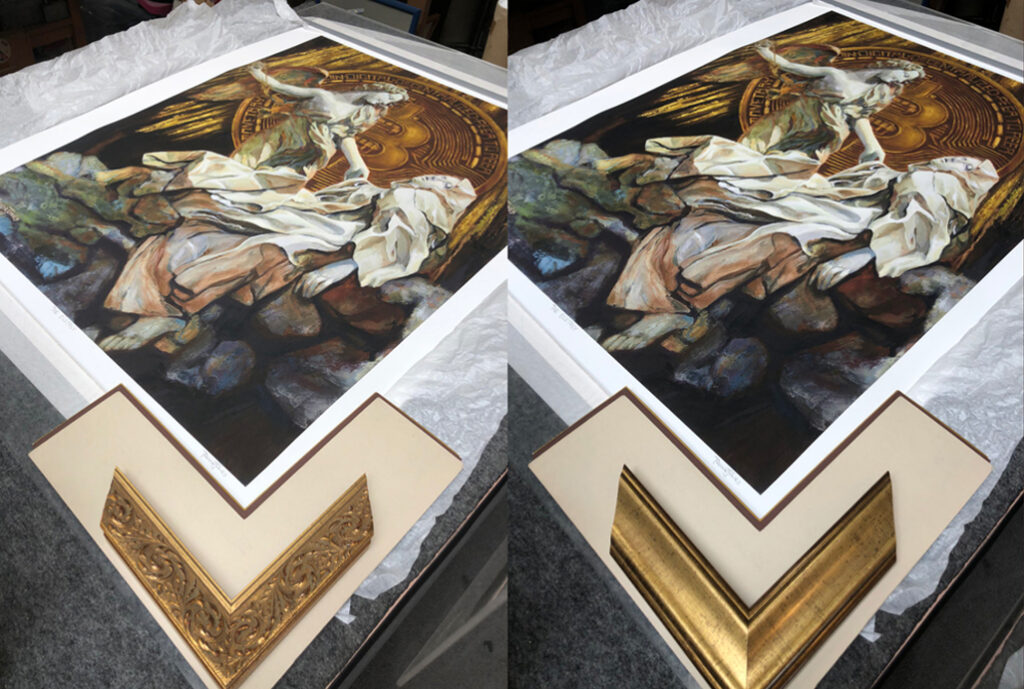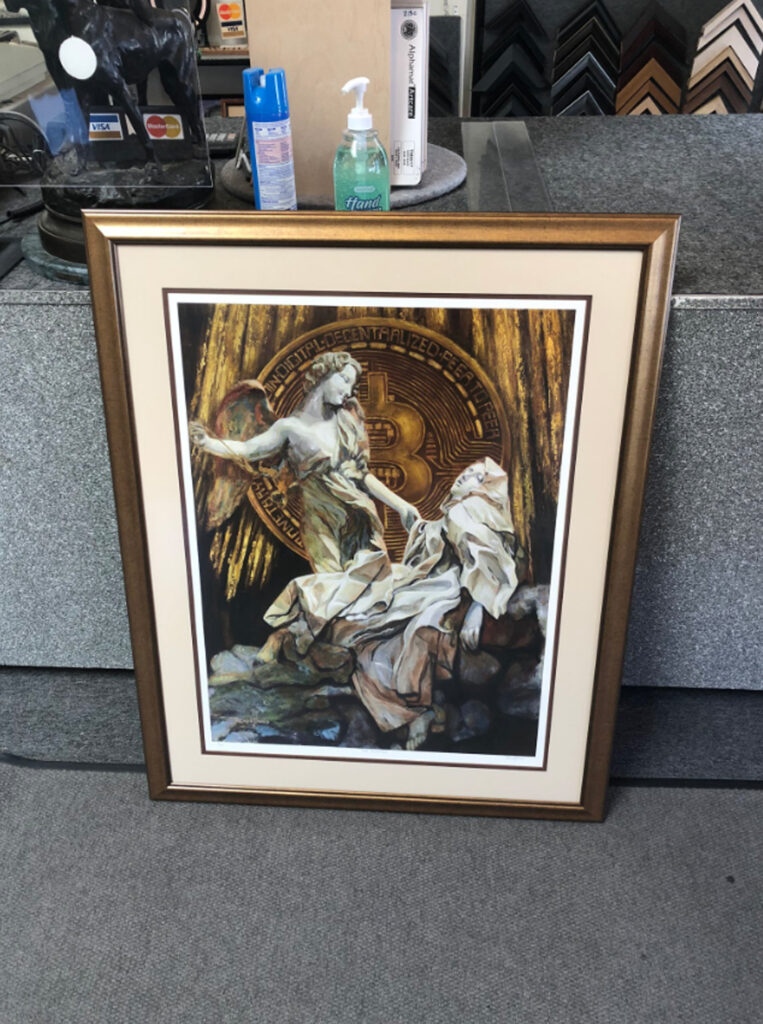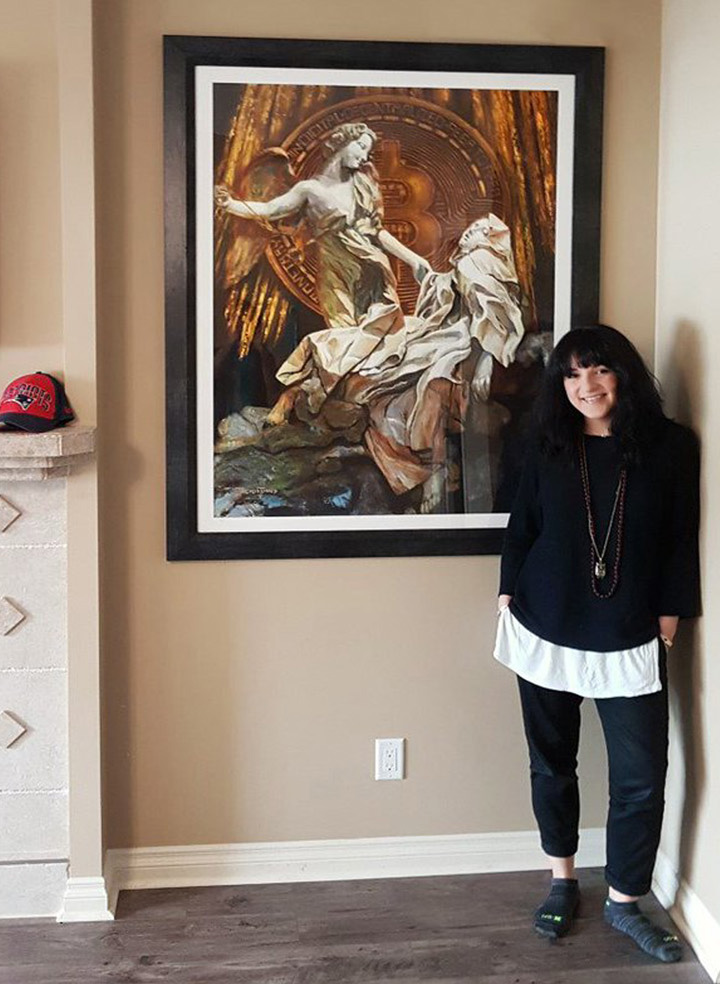Print Care & Framing
Handling your Print:
Ideally, take your artwork to a professional framer first and have them remove it from the tube to discuss framing options with you. If you need to remove the print from the tube yourself (see below) before you visit the framer be very careful. Removing without care can cause damage when trying to uncurl the print by causing crimps, dents or tears in the paper. Very gently pull the print from the tube onto a large clean surface and use both hands to avoid creasing. Once a print is creased it is very difficult to fix this imperfection. Put a clean piece of paper down on the table or ensure a very clean surface to protect the print from stains and smudges.
Framing:
All prints have a 5 cm border. Find a professional framer near you to discuss framing options. Framing companies can vary hugely in price so it’s a good idea to get a quote from 2 or 3 framers.
Important! If you’re not planning on having the print framed within a few weeks of receiving it don’t leave it rolled up in the tube. Carefully place the print between two sheets of cardboard, tape them together and keep the print in a dry, safe space. When you’re ready to frame the print, to save from potential damage take it to the framer flat in the cardboard rather than rolling it up and putting it back in the tube.
If possible, use Non Reflective (invisible) glass or Plexiglas/Perspex when framing the work. It is a lot more expensive but the ‘viewer experience’ is unbeatable as there will be very little annoying light reflection and glare. There are different types of Non Reflective glass and they range in quality of UV protection. The museum quality glass has 99% UV protection and is of the absolute highest quality and although recommended it is also very expensive.
When hanging your artwork avoid:
- Ultraviolet light is one of the biggest reasons that art fades. Exposing your prints to direct sunlight and even strong artificial light from bulbs without the UV protection glass can cause colour fading. Light damage is cumulative and irreversible and can even damage the structure of the paper itself.
- Extreme temperature fluctuations can cause expansion and contraction of the paper fibers and make the print surface uneven. Temperature increases can also increase the rate of deterioration, leading to brittleness and darkening of the paper. Do not display an artwork directly over a heater.
- High humidity can cause mildew, molding and foxing (brown spots), as well as attract pests.
Print information
Hahnemuhle German Etching fine art paper is a heavyweight etching board and is velvety smooth with a fine surface texture. German Etching is one of the most popular media worldwide for artwork and photography.
A 310gsm mould made watercolour paper, with the smoothest surface in the Art Line range making it ideal for prints which are highly detailed or for photographic imagery. As the name suggests, the surface is similar to original etching paper and will also produce traditional prints excellently.
Framing examples



